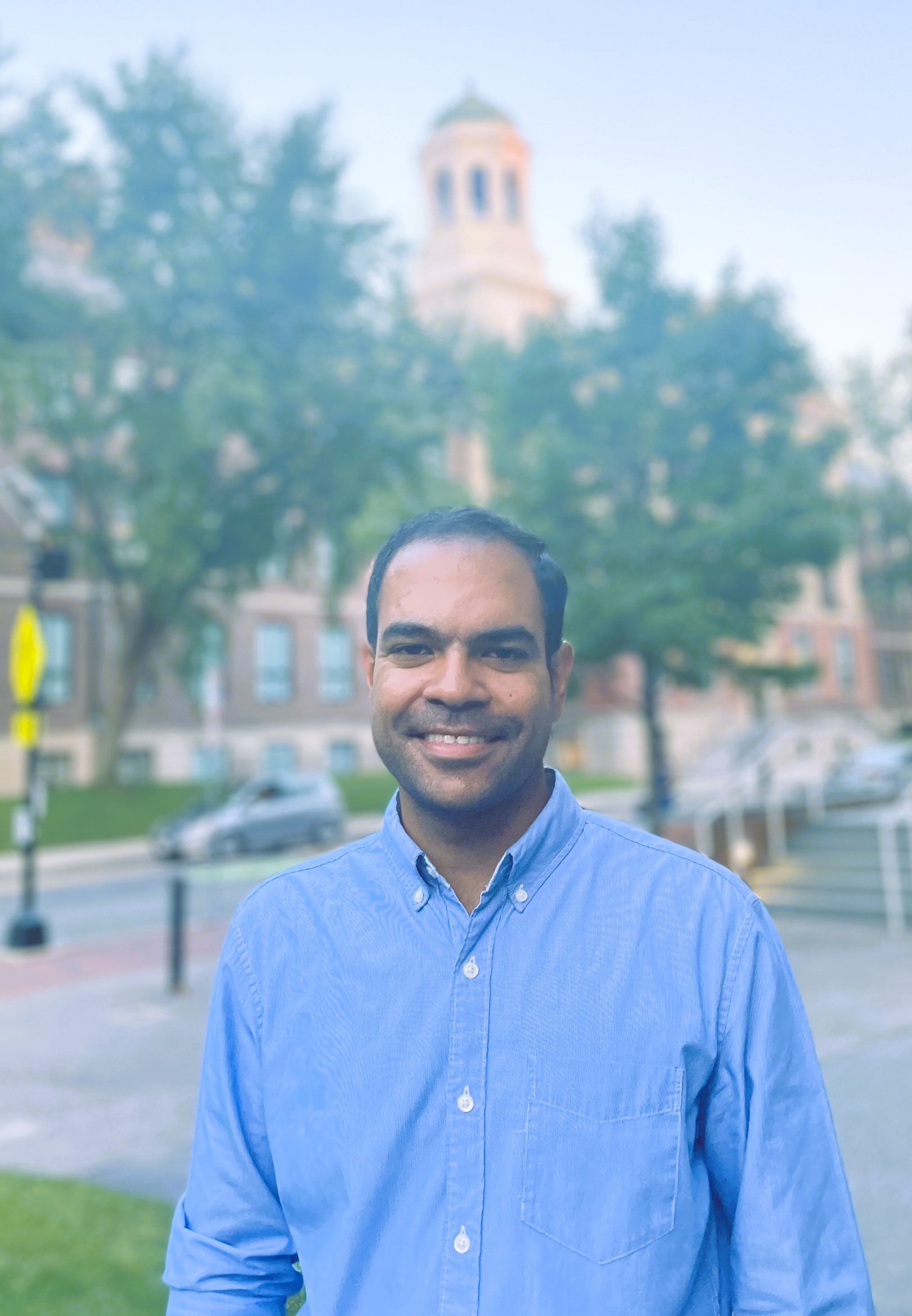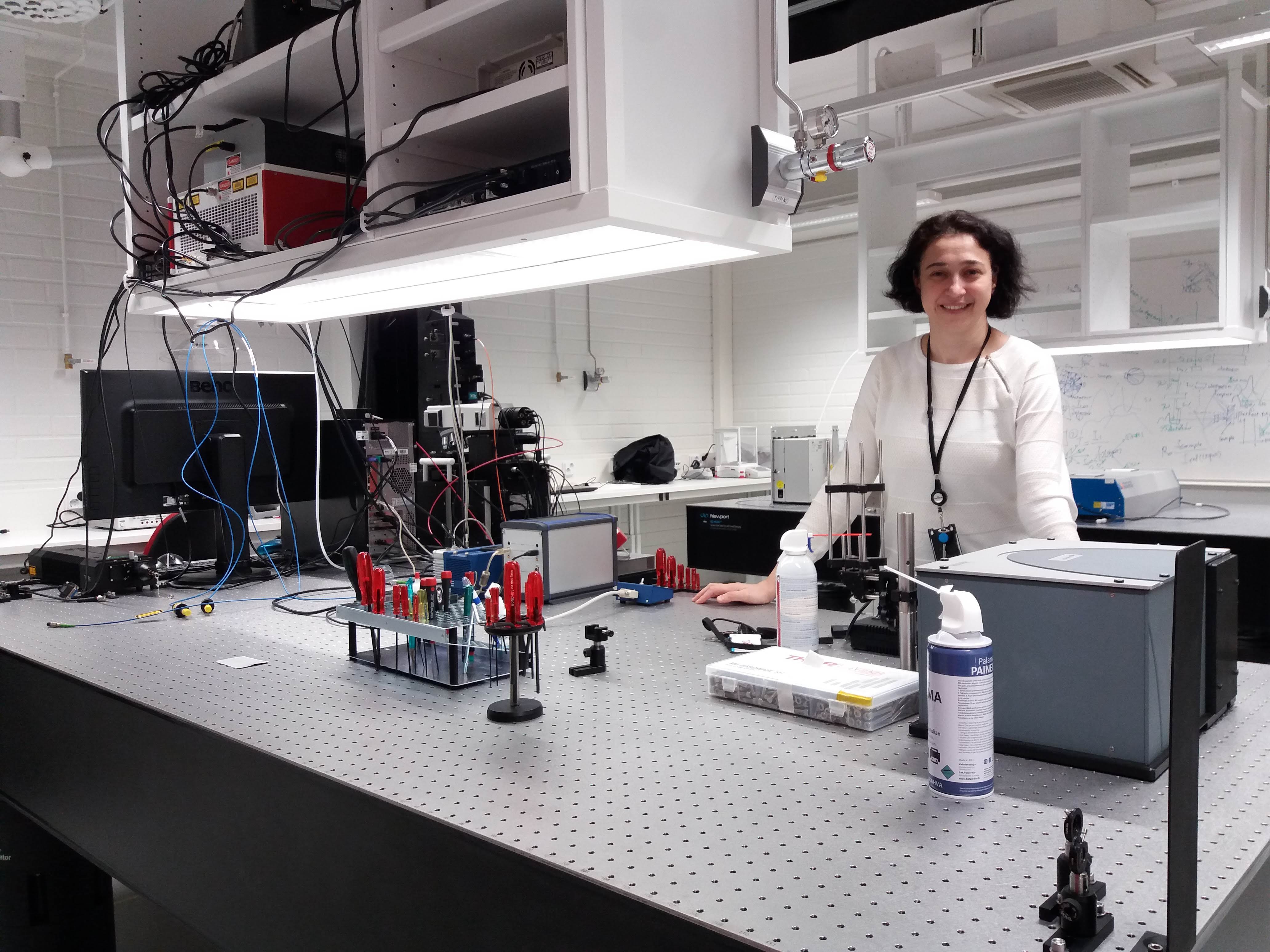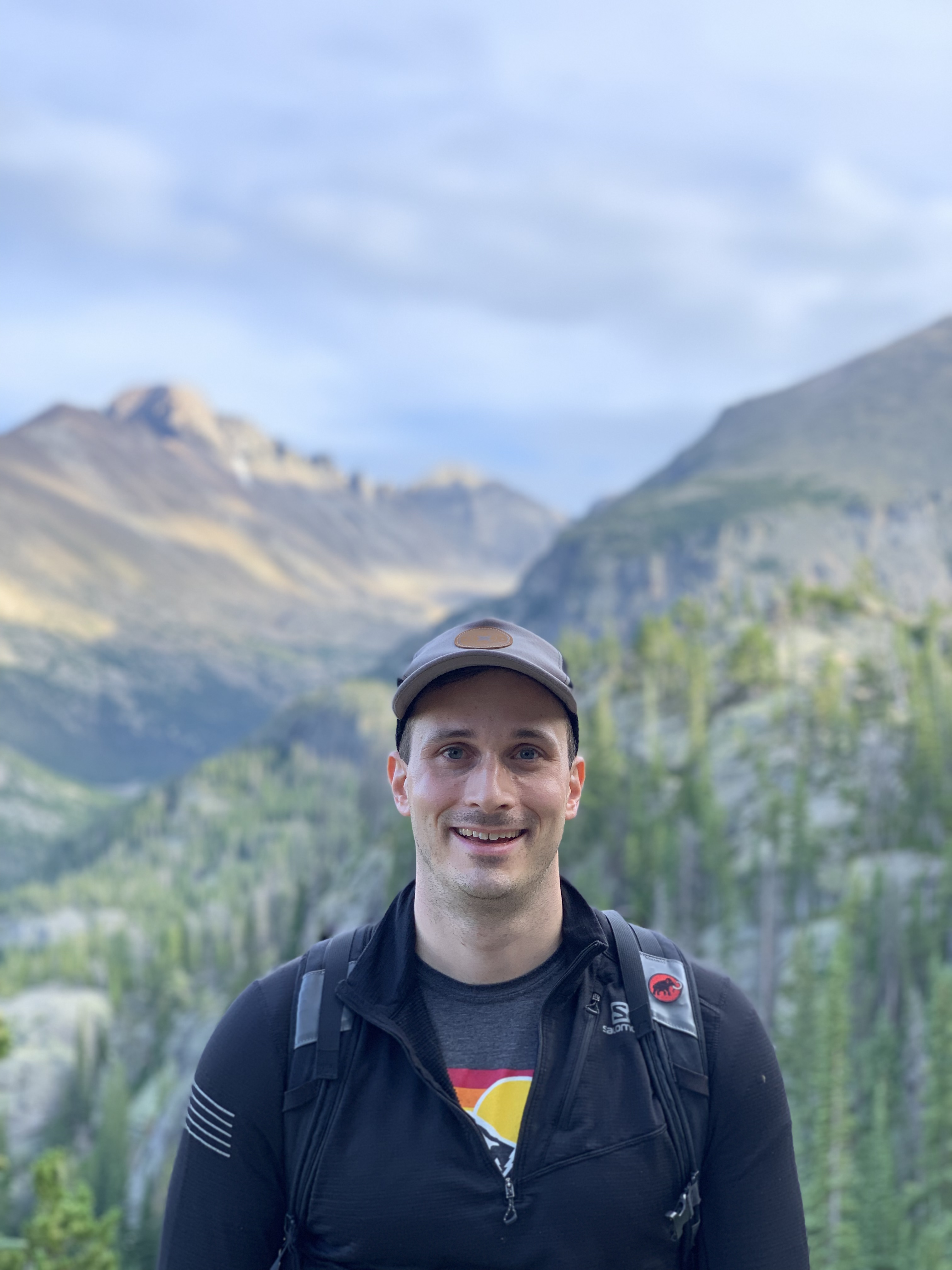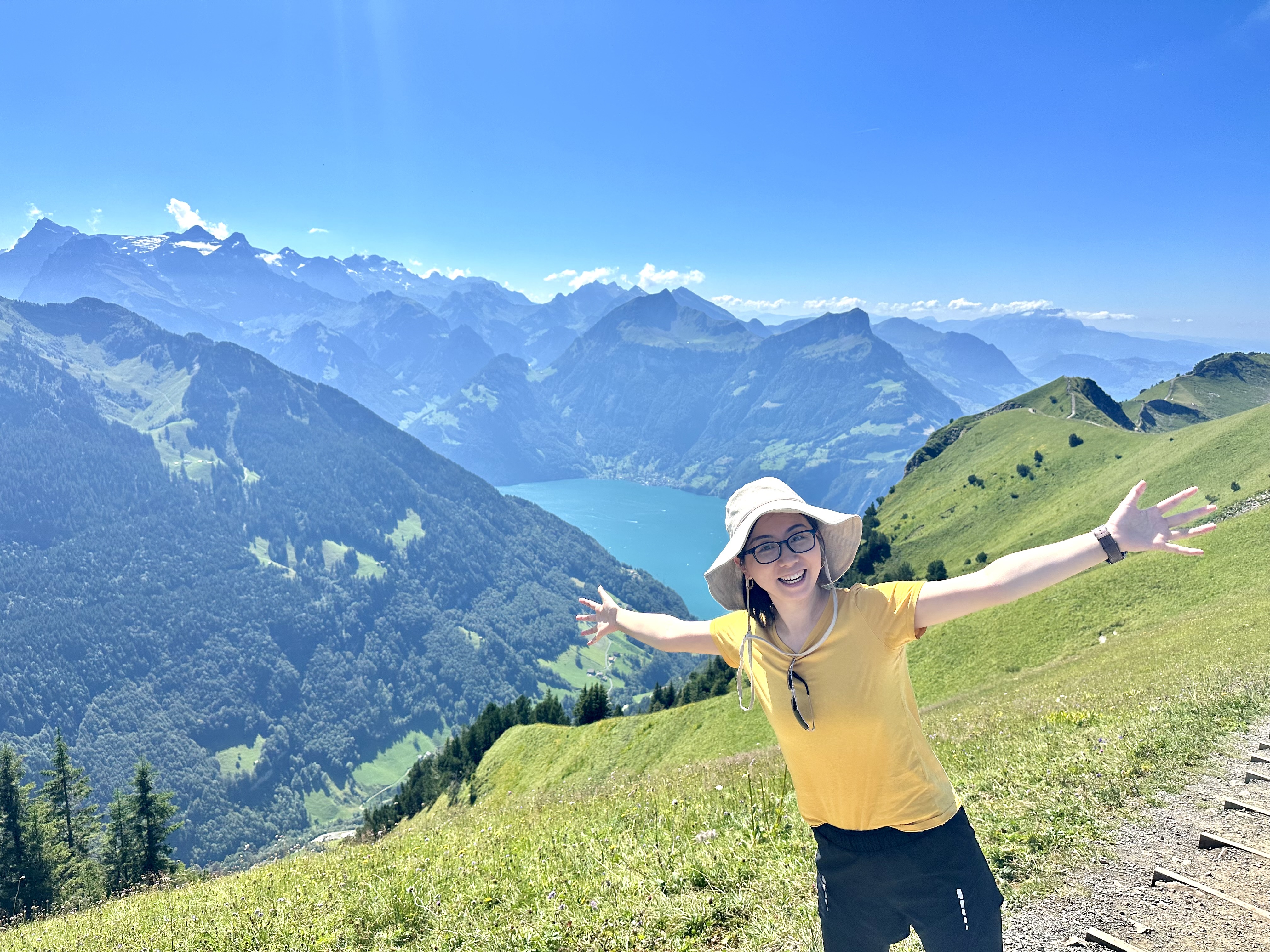8
New hires
Meet Ahmed Dorrah, Humeyra Caglayan, Dominik Juraschek, and Min Wan
Ahmed Dorrah
Perfectly fitting the profile
When Ahmed Dorrah read the vacancy for an Assistant Professor in the Photonics and Semiconductor Nanophysics group, it was immediately clear to him he had to apply:
‘The text was precisely describing my profile.’
Read more
Passion for unprecedented properties
Ever since high school, Humeyra Caglayan has wanted to become a scientist. ‘The fact that you are able to use your deep understanding of some phenomenon to create things that do not exist in nature keeps fascinating me. Plus, I really like the interaction with students and learning from them.’
Read more
Humeyra Caglayan
Dominik Juraschek
Vibrant explorer
In October 2024, Dominik Juraschek joined the Eindhoven Hendrik Casimir Institute as a principal investigator in the Advanced Nanomaterials & Devices group. ‘I want to build a leading theory group in the field of nonlinear and chiral phononics.’
Read more
Steering her career
In February 2024, Min Wan joined the Electro-Optical Communications group as an Assistant Professor in the field of terahertz imaging and sensing. ‘Generating terahertz radiation is not yet very efficient and remains costly. We aim to make terahertz technology more accessible and to explore its potential applications.’
Read more
Min Wan

‘Ever since I was a child, wireless communication has fascinated me.’
Ahmed Dorrah
Perfectly fitting the profile
When Ahmed Dorrah read the vacancy for an Assistant Professor in the Photonics and Semiconductor Nanophysics group, it was immediately clear to him he had to apply: ‘The text was precisely describing my profile.’
‘I come from a family of engineers,’ Dorrah starts telling the story of how he ended up at the Eindhoven Hendrik Casimir Institute. ‘Ever since I was a child, wireless communication has fascinated me. I found it mind-blowing that I can speak into a cell phone, and someone at the other end of the world can hear me almost instantly.’ It was a no brainer for the young Egyptian to pursue a bachelor’s in telecommunications and wireless technology. ‘After working in the telecommunications industry for a year, I wanted to delve deeper and truly understand its fundamental limitations. That is how I ended up obtaining my master’s and PhD in electromagnetics and photonics and pursuing an academic career afterwards.’
Choice of field
The fact that Dorrah specialized in the topic of meta-optics happened serendipitously. ‘While I was applying for graduate schools, I found a project at the University of Toronto that studied superluminal transfer of optical pulses in gases with propagation speeds faster than light. I really enjoyed the topic. In fact, I ended up scoring higher grades in my optics and photonics courses than in those related to electrical engineering. So in a sense, the field chose me.’
In his subsequent PhD project, Dorrah shifted toward shaping optical beams in free space for augmented and virtual reality, microscopy and holography. Then he transferred to Harvard for a postdoc, where he worked in the field of metasurfaces. ‘Optical metasurfaces consist of nanoscale patterned metallic or dielectric structures,’ the enthusiastic scientist lectures. ‘In these materials, you can essentially engineer how the properties of light change pixel by pixel and realize effects that do not exist in bulk material, or in nature in general.’
On-chip meta-materials
At TU/e, Dorrah brings together all of the knowledge and expertise he has acquired over the years, with the aim to integrate metamaterials onto a chip. ‘The key reason for me to come to TU/e was that the ecosystem here combines academic research with industry, enabling the translation of novel technology into real life applications in a record time.’
The dream is to build an experimental group that aims at understanding the fundamental limits of metamaterials, and using them in novel applications, Dorrah states. ‘It would be amazing if we could for example use multiple layers of metamaterials to achieve low power and ultrafast switching in next generation semiconductor technology.’

‘I am passionate about understanding how things work in nature and using this knowledge to build entirely new things.’
Humeyra Caglayan
Passion for unprecedented properties
Ever since high school, Humeyra Caglayan has wanted to become a scientist. ‘The fact that you are able to use your deep understanding of some phenomenon to create things that do not exist in nature keeps fascinating me. Plus, I really like the interaction with students and learning from them.’
Humeyra Caglayan joined the Photonic Integration group as an Associate Professor in August 2024, after having built her own group Metaplasmonics at Tampere University in Finland. ‘I am passionate about understanding how things work in nature and using this knowledge to build entirely new things,’ she says. ‘Metamaterials – engineered materials with specifically designed properties – allow us to engineer properties that are not usually found in existing materials. As such, they fit my interests perfectly.’
Unusual bending
The physicist first got into contact with the topic of metamaterials during her PhD research at Bilkent University in Turkey. In order to work with one of the fathers of the field, Nader Engheta, she moved to the University of Pennsylvania for her postdoc. There she got intrigued by the concept of zero-index metamaterials: materials that bend or refract light in unusual and unexpected ways.
When Caglayan started looking for a more permanent position, Finland offered her good opportunities. ‘In my own group, we work on metamaterials and metasurfaces, exploring a wide variety of their possible applications. One of our findings even ended up as the basis for a spin-off company called Timekeeper, where we use index-zero metamaterials for an all-optical timekeeping method.’
Depth of focus
Another topic Caglayan is interested in, involves metasurfaces or more specifically metalenses. ‘By cleverly designing the structure of a surface, we can make a lens that is able to focus on different depths simultaneously. As a result, you can get an overall sharp image of a 3D structure in a single shot. We are now exploring the possibility to use these lenses for a precision surgical intervention, where surgeons can assess during a tumor operation if they have removed all of the cancerous tissue at once with this advanced fast and accurate imaging method.’
Her move from Finland to Eindhoven was a content-driven one, Caglayan says. ‘In Finland I was working on free space optics. Now, I want to take the next step and integrate our solutions directly onto a photonic chip especially using inverse design and heterogeneous integration to exceed today’s perceived limitations. We refer to this direction as integrated metaphotonics.’
Tight bonds with industry
Having worked in Turkey, the United States and Finland, in Eindhoven, Caglayan is particularly impressed with the tight bonds between the university and industry. ‘It is amazing to see how direct those contacts are, with multiple people having appointments both at university and in industry. I haven’t seen public-private collaboration at this level before. All in all, there is a low threshold to making connections and collaborating across the boundaries of disciplines and institutions. I am convinced that open approach holds great potential for our future imaging, sensing and communication technology.’

All changed when he got an inspiring physics teacher. ‘He enthused me to enroll in a physics program.’
Dominik Juraschek
Vibrant explorer
In October 2024, Dominik Juraschek joined the Eindhoven Hendrik Casimir Institute as a principal investigator in the Advanced Nanomaterials & Devices group. ‘I want to build a leading theory group in the field of nonlinear and chiral phononics.’
That he would become an award-winning physicist on a fast track to a full professorship was not at all self-evident during Dominik Juraschek’s high school years. ‘There even was a time when I was very close to failing in physics and mathematics,’ the new hire smiles. All changed when he got an inspiring physics teacher. ‘He enthused me to enroll in a physics program.’
From that day on, building a career in science has been his dream, reinforced by the excellent PhD advisor he found in Nicola Spaldin at ETH Zurich in Switzerland. Much to his own surprise, Juraschek was admitted to the prestigious Swiss institute, where he ended up receiving the ETH Medal for his outstanding doctoral thesis. That was his entrance ticket to Harvard, where he spent some 2,5 years as a postdoctoral fellow.
Adventurous career path
The scientist loves to explore different countries. So, after his time in the United States, he left for Israel, where he got a tenure track position at Tel Aviv University and built his own research group on the topic of nonlinear phononics. Last year the physicist decided to leave Tel Aviv for a new adventure. ‘During my master’s I had stayed in Utrecht for a short Erasmus exchange. Ever since I had always wanted to return to the Netherlands for a longer period. When I had my job interview here, I was intrigued by how large and well-equipped TU/e is, for example when it comes to the NanoLabNL facilities. And everyone here at the department of Applied Physics and Science Education is super friendly.’
Juraschek is part of the Advanced Nanomaterials & Devices group. There he works on inducing lattice vibrations, or phonons, with lasers, he explains. ‘The vibration of the atoms changes the internal geometry, influencing all interactions in the material and thus its properties. I focus on the control of magnetism with the aid of rotating vibrations. This is an entirely new field called chiral phononics, for which I recently received an ERC Starting Grant.’
Understanding new behavior
In his PhD research, Juraschek predicted how circular vibrational motions of atoms in a solid could give rise to magnetic moments. ‘Some first experiments have shown this magnetization effect to be about 10,000 times larger than expected though. Nobody understands what is happening there. It is my goal to develop microscopic models and computational methods to understand this behavior so that we can make use of it in future devices.’
Juraschek has high ambitions for his group: ‘In five years’ time, I hope that we will be the leading theory group in the field of nonlinear and chiral phononics. And that we will have some first ideas of what future devices based on these phenomena could look like.’

That visit marked the start of her career as an international scientist.
Min Wan
Steering her career
In February 2024, Min Wan joined the Electro-Optical Communications group as an Assistant Professor in the field of terahertz imaging and sensing. ‘Generating terahertz radiation is not yet very efficient and remains costly. We aim to make terahertz technology more accessible and to explore its potential applications.’
Min Wan has always been firmly at the steering wheel when it comes to her own career. That started with her decision to enter a male-dominated engineering program at university ‘because, in my home country China, engineering was considered as a ticket to a successful career’. During the master phase of her training in optical engineering at the Beijing University of Technology, she thought it would be good for her to study abroad. The fact that at the time, she didn’t speak English very well, didn’t hold her back in any way. ‘My master supervisor Wang Dayong connected me with John (Sean) T. Sheridan from University College Dublin, who was graciously willing to host me for a three-month visit.’
Sow a seed
That visit marked the start of her career as an international scientist. ‘In order to practice my English, I engaged in every possible activity in and outside of the lab, forcing me to communicate with others.’ After completing her master’s degree in China, she found a job in industry. One day, she learned that Sheridan’s group had a PhD position available that closely aligned with her research interest. In 2017, she moved to Dublin to become a PhD student, which changed her life. ‘Sow a tiny seed in your heart, and it might bloom into a beautiful flower,’ she states.
During COVID-19, the labs were not accessible, which gave her the opportunity to further explore her supervisor’s novel idea on subpixel motion estimation. ‘That period was productive and meaningful for me, as we were both excited by the results of the new method and worked closely throughout.’ As soon as the labs reopened, she started to verify the method experimentally and managed to finish her PhD in 2021 without any delays.
Unexpected turn
The ambitious academic has always been focused on her career. As a first step, she became a research fellow at UCD in the same research group. When a position opened up for a lecturer on a collaborative project between Dublin and Beijing, it fitted her as a glove. However, life doesn’t always go according to plan, she says. ‘Sean passed away unexpectedly, leaving me in shock.’ Eventually, she decided the time had come to leave Ireland for new adventures. ‘I had visited TU/e before and thought Eindhoven would be a good place to take the next step in my academic career. I appreciate the diverse culture: it makes the place feel very vibrant, where people play hard and work even harder. What’s more, I really like the support for women here. TU/e has put their money where their mouth is and actively scouts for talented women to develop the technology for tomorrow.’